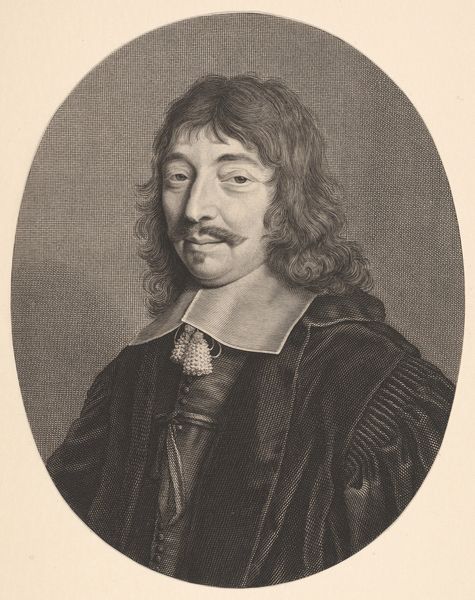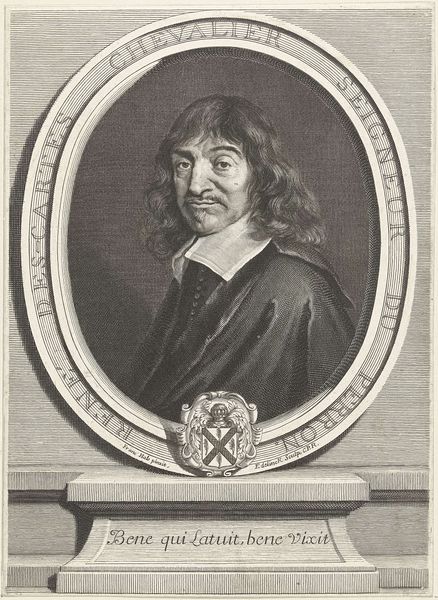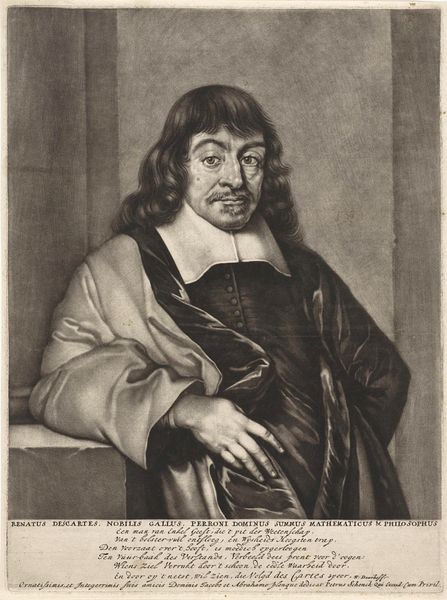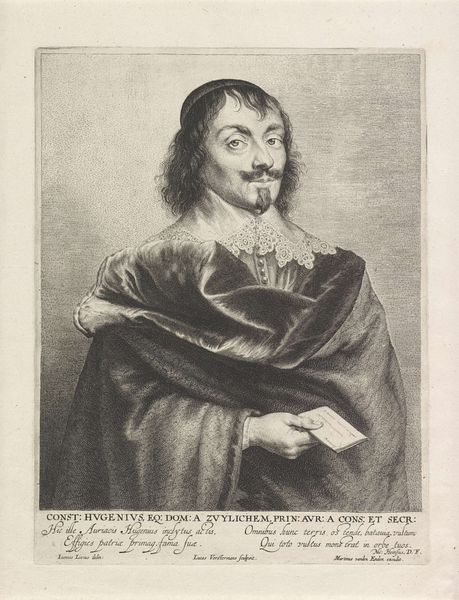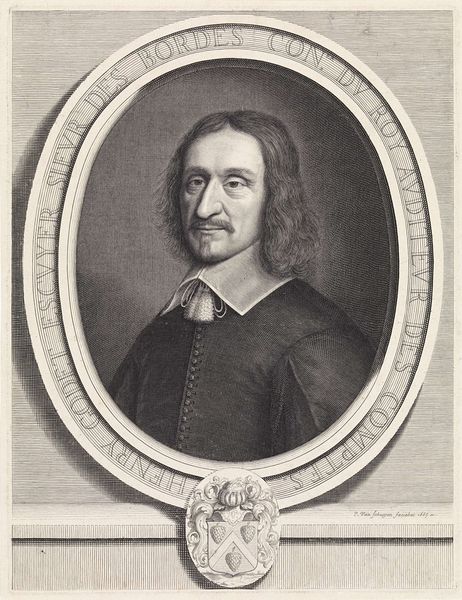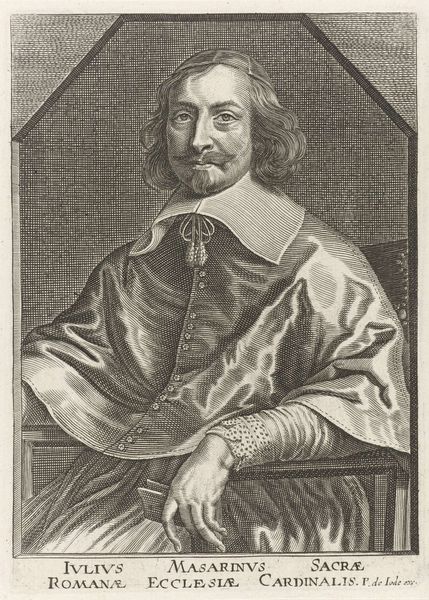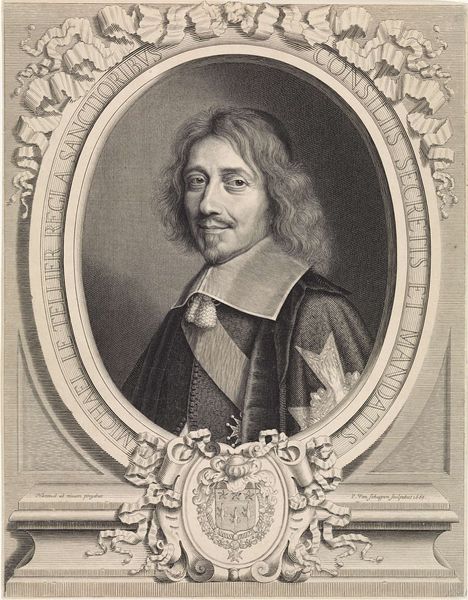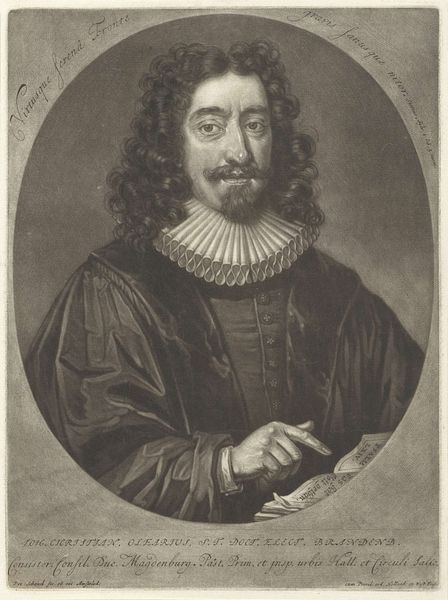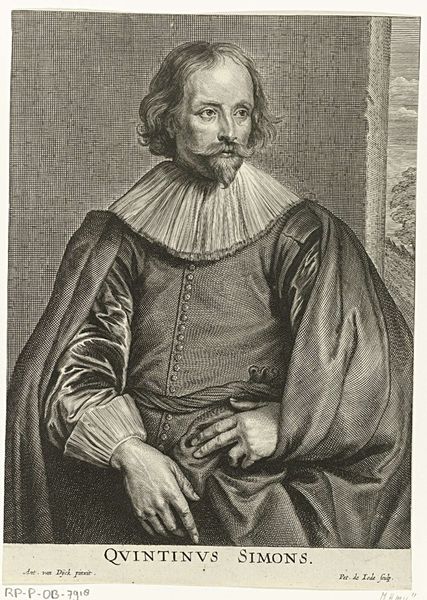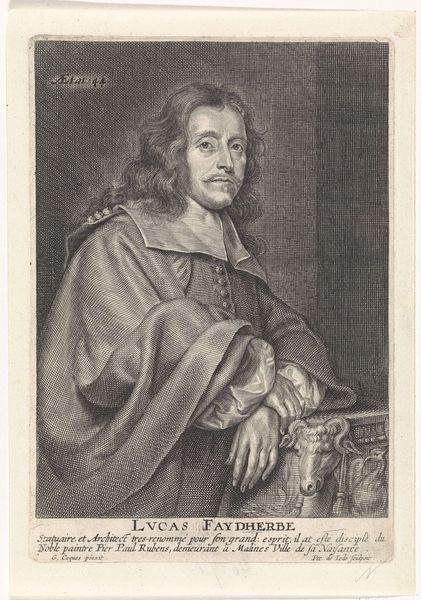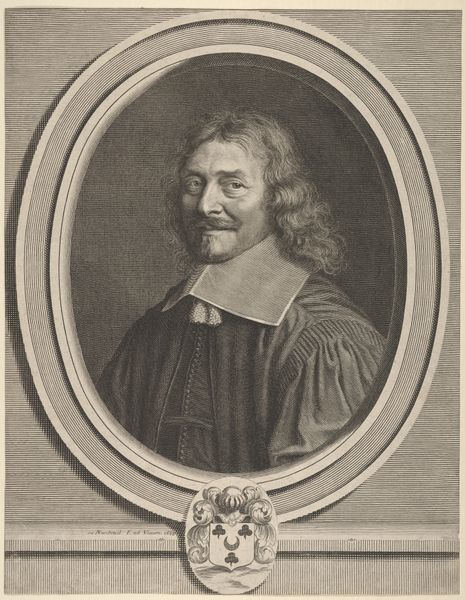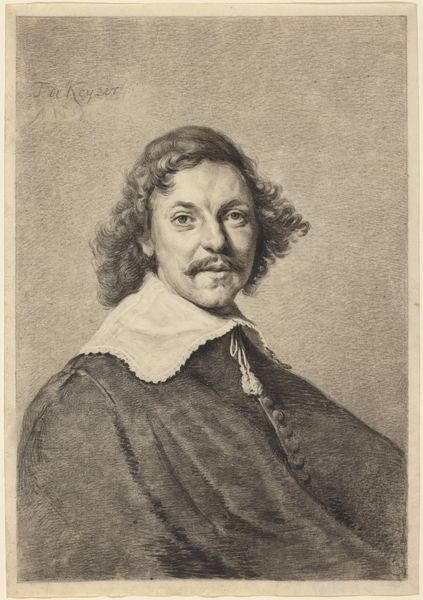
print, intaglio, paper, engraving
#
portrait
#
baroque
# print
#
intaglio
#
paper
#
engraving
Dimensions: height 417 mm, width 308 mm
Copyright: Rijks Museum: Open Domain
Editor: Here we have a 1641 engraving on paper, "Portret van Claudius Salmasius," by Jonas Suyderhoef. There's something very formal and imposing about this portrait... What symbolic weight might this image have carried in its time? Curator: Indeed. Consider how portraits of prominent figures operated then. Each element – from the subject’s gaze to their attire – reinforced specific ideals. Tell me, what details jump out at you first, and what impressions do they create? Editor: Well, his collar is quite ornate. And the Latin phrases at the bottom feel very deliberate. Is that a statement of status? Curator: Precisely. Lace signifies wealth and refinement, hallmarks of aristocratic taste. Notice too the text, framed almost as an emblem. Its carefully constructed praise speaks volumes. It’s no simple nameplate but an assertion of intellectual prowess through classical allusion. How might such references function? Editor: Almost like branding? Creating a lasting association in the viewer's mind? Curator: An insightful comparison. Symbols like these shaped and solidified reputations, forging enduring legacies for their subjects within a cultural memory. And memory could then be invoked as a potent form of authority. What do you make of the man’s direct gaze? Editor: He definitely seems self-assured, maybe even a bit severe? It's like he's challenging you. Curator: His expression aims at commanding respect, embodying both learning and power. Think about that balance of characteristics – and what happened to images with symbols that went awry. Editor: That’s a lot to unpack from one image! It makes me see portraits in a completely new light.
Comments
No comments
Be the first to comment and join the conversation on the ultimate creative platform.
